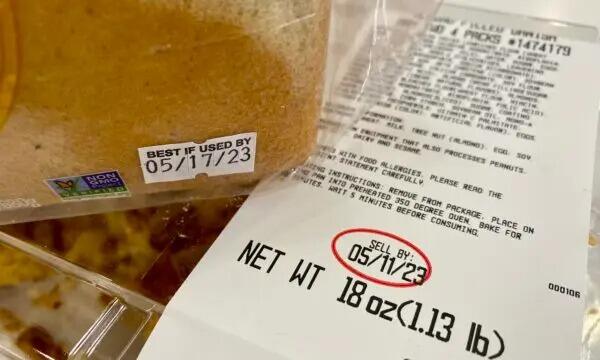Read plan details carefully, and expect changes to prices and coverage
Medicare open-enrollment period for 2025 is approaching - it runs from Oct. 15 to Dec. 7 - and it's shaping up to be very complicated.
That's in part because of major changes in Medicare Part D prescription-drug coverage taking effect in January; a new, optional prescription-drug payment plan; and growing financial pressures on private insurers' Medicare Advantage plans - the alternatives to traditional, or original, Medicare Parts A and B that enroll 33 million Americans.
"Open enrollment is going to be a big challenge," said Diane Omdahl, president of 65 Incorporated, a Medicare advisory service. "There are so many things people will be dealing with."
During open enrollment, Medicare beneficiaries can join, switch or drop a Medicare Part D drug plan or Medicare Advantage plan for 2025. They can also switch out of a Medicare Advantage plan and into traditional Medicare for the year ahead. (Medigap plans - optional supplemental plans for people with traditional Medicare - aren't part of open enrollment.)
Why Medicare open-enrollment decisions can be hard
Making the right Medicare choices during open enrollment to save money and get the right coverage for 2025 can be difficult. The reason: All Part D and Medicare Advantage plans are different, and Medicare beneficiaries often have more than 40 plans to choose from.
"People sometimes say, 'Tell me what the best plan is.' And I always say, 'There is no single best plan, because healthcare is so personal,'" said Stephanie Fajuri, program manager for California's free Medicare counseling program, the Health Insurance Counseling and Advocacy Program (HICAP).
If you've been in a Part D or a Medicare Advantage plan in 2024, don't assume its coverage and costs will be identical in 2025 or that it will necessarily be the right plan for you next year.
"Many people just stay with the same Medicare plan as the previous year because that's the easiest. I encourage them not to, because benefits do change significantly," said Paola Bianchi Delp, president of CareNu, a healthcare company specializing in the coordination of chronic-illness care.
A recent eHealth survey of Medicare beneficiaries found that 51% have never made a change to their Medicare coverage.
Throughout September, Part D and Medicare Advantage plans sent members their Annual Notice of Change explaining how the plans' costs and coverage will change in 2025. If you have either or both of these plans, you'll want to take the time to read this carefully.
Here's how to make smart decisions during open enrollment about Medicare Advantage and Part D plans for 2025, and how to get help if you need it.
Traditional Medicare or Medicare Advantage?
The first choice to make during open enrollment is whether to enroll in traditional Medicare with a Medigap plan or a Medicare Advantage plan. That may be a head-scratcher for some; a survey by the digital-health company DUOS found that 49% of respondents didn't know the difference between Medicare and Medicare Advantage.
Traditional Medicare lets you go to any physician or hospital who accepts Medicare and generally doesn't require a referral to see a specialist. But it doesn't cover dental, hearing or vision expenses and, starting next year, probably won't cover telehealth appointments (other than for things like mental and behavioral health) except for people in rural areas.
Traditional Medicare's Part A covers hospital bills and some home healthcare and generally has no premium, but has an inpatient hospital deductible ($1,632 in 2024) and daily coinsurance costs. Part B covers 80% of Medicare-approved doctors' bills after its deductible ($240 in 2024); the monthly premium in 2024 for most beneficiaries was $175. The 2025 figure hasn't been announced. People with high incomes pay a premium surcharge.
A Medicare Advantage plan (which may include a Part D drug plan) is often less expensive than the combination of traditional Medicare and a Medigap plan. Medicare Advantage plans may cover dental, hearing and vision expenses, as well as telehealth and supplemental benefits like transportation costs to doctors' offices and gym memberships. But they have limited networks of doctors and hospitals, and often require prior authorization before seeing specialists.
Medicare Advantage plans, also known as Medicare Part C, set their own premiums, deductibles and copayments. Many offer $0 premiums as a way to attract members.
Why Medicare Advantage plans may lose luster
Because Medicare Advantage insurers have been squeezed due to reimbursement changes from the U.S. government and rising usage by members, experts expect their plans to become less attractive in 2025.
Look for higher out-of-pocket costs and reductions, or even the elimination of certain benefits.
"This will be a year of regression" for Medicare Advantage plans, predicted Fran Soistman, CEO of eHealth, a health-insurance advisory firm.
He thinks many plans will reduce their dental and vision coverage and raise copays to see specialists. "There's a concerted effort to protect the benefit but to lessen its amount," Soistman added.
Omdahl said she thinks "there's going to be a lot of tweaking" in Medicare Advantage plans for 2025. "Optional benefits, I think, are a prime target. If somebody signed up for a gym membership through a Medicare Advantage plan, it may not be there in 2025."
Delp recommends that Medicare beneficiaries who lack an easy way to get to doctors' appointments look for 2025 Medicare Advantage plans offering transportation reimbursements.
Soistman expects Medicare Advantage plans rated 41/2 or 5 stars by the Centers for Medicare and Medicaid Services to be less likely than others to trim benefits or raise members' costs. That's because the top-rated plans receive more government money than others.
It could also get harder to find your preferred doctors and hospitals in Medicare Advantage plans for 2025. Two dozen health systems have said they'll stop participating in certain Medicare Advantage plans from major insurers such as UnitedHealth (UNH), Humana (HUM) and Aetna (CVS) next year.
When people ask Fajuri about choosing a Medicare Advantage plan, she said the "No. 1 thing I recommend is to ask their doctor, 'What coverage will you accept next year?'"
If you've been in a Medicare Advantage plan during 2024, that plan might not be offered in 2025. Humana is dropping out of 13 Medicare Advantage markets next year, so more than 550,000 people (10% of its participants) will lose their plans.
Should you decide to switch from Medicare Advantage to traditional Medicare for 2025, don't drop your current plan until you ensure you can enroll in a Medigap plan. Many Medigap plans reject applicants with pre-existing conditions if they didn't sign up when becoming eligible for Medicare initially.
"We don't recommend switching to original Medicare without having some type of secondary coverage," said Fajuri.
Big changes coming to Part D drug plans
Medicare Part D prescription-drug plans are likely to change dramatically in 2025, too.
That's due to Medicare's $2,000 cap on out-of-pocket prescription costs for medications covered by Part D plans, which takes effect next year - a provision in the 2022 Inflation Reduction Act that lets Medicare negotiate drug prices with manufacturers.
AARP estimates that 3.2 million Medicare enrollees will reach the $2,000 cap in 2025.
"I think this is going to be one of the most important open-enrollment seasons we have had on Medicare Part D because of all the changes taking place," said Leigh Purvis, prescription-drug policy principal at AARP. "People are going to need to take a very hard look at their plan options and figure out which one is best for them."
A majority of Medicare beneficiaries (87%), however, hadn't seen, read or heard anything about the upcoming Medicare Part D reforms, according to a survey by the Pan Foundation, which works on accelerating access to affordable and equitable healthcare.
Since Part D insurers will be on the hook for more of the costs of beneficiaries' medications, they're expected to respond in a variety of unpleasant ways.
"I think there could be unintended consequences of the reforms" in the Inflation Reduction Act, said Amy Niles, chief mission officer of the Pan Foundation.
Those Part D plan revisions in 2025, Omdahl said, could include: dropping coverage of certain high-priced drugs; moving drugs to higher-cost tiers; steeply raising premiums, copays and coinsurance; requiring members take certain medications before letting them take similar ones they prefer (known as step therapy) and eliminating some Part D plans altogether.
Thomas Cowhey, chief financial officer of CVS Health, the parent company of Medicare Part D insurer Aetna, recently said Part D premiums will be "much, much higher for 2025."
The $2,000 cap, incidentally, will not apply to Part B prescriptions administered by doctors or any medications not covered by your Part D plan.
Soistman anticipates standalone Part D plans will be more likely to raise members' costs than ones in Medicare Advantage plans, which will be more insulated from the $2,000-cap rule.
When researching Part D plans during open enrollment, "don't just look at their premiums," said Purvis. "There are other costs associated with your coverage, like what you're paying for your prescription drugs."
Be sure to look at the websites of potential Part D plans and Medicare's online Plan Finder to find plans that will cover your medications at prices you can afford. (A Part D plan's list of covered drugs is called its formulary.)
"Just because you had something in your 2024 Part D formulary does not give you assurance that it's going to be in your 2025 Part D formulary," said Delp.
Another way to keep prescription costs down, Purvis suggested: Ensure that the pharmacies you prefer are in the Part D plan's preferred network.
The new Medicare prescription payment plan
Something else coming in 2025 you'll need to make a decision about during open enrollment: the new, little-known Medicare Prescription Payment Plan, sometimes dubbed MP3.
A striking 92% of Medicare beneficiaries surveyed by the Pan Foundation hadn't seen, read or heard about it.
Under the current Medicare prescription-drug system, people with Part D plans often get walloped with huge out-of-pocket costs every January and February - sometimes thousands of dollars - because they haven't reached their annual deductible amount and their insurance coverage hasn't kicked in.
The 2022 Inflation Reduction Act created the MP3 to avoid this problem. If you sign up for MP3 as part of your 2025 Part D plan, you'll be put on a monthly payment plan for your Part D prescriptions (not Part B ones), smoothing out-of-pocket costs during the year.
But, Delp said, "I think the prescription payment plan is going to be quite confusing for the consumer." The reason: Part D policyholders with MP3 will get two bills each month - one for their prescriptions and one for their premiums.
You'll want to run the numbers for your Part D prescriptions in 2025 to determine whether the payment plan is worth the extra hassle.
Signing up for MP3 might be unnecessary if you'll get financial assistance for your medications from either a state-run Medicare Savings Program or Medicare's low-income subsidy program, your pharmaceutical manufacturers, or groups like the Pan Foundation.
Jennifer Teague, director of health coverage and benefits for the National Council on Aging, estimates that Medicare's Extra Help subsidy program saves people roughly $5,900 a year. To qualify, your income must be lower than roughly $23,000 (about $31,000 for married couples) and you must have limited assets.
"There's a lot of complicated math that goes into how you figure out whether you should enroll [in MP3] or not," said Purvis.
Delp said snowbirds thinking about signing up for MP3 will want to be sure their mail gets forwarded to their winter locale so they won't miss seeing their Part D plans' new monthly bills.
Getting help during Medicare open enrollment
You don't need to make Medicare open-enrollment decisions alone.
Medicare's website, Medicare.gov, and the agency's annual "Medicare and You" booklet (also on the Medicare site) explain the ins and outs of traditional Medicare, Medicare Advantage plans and Part D plans.
The Medicare site's Plan Finder can show you details on all the Part D and Medicare Advantage plans that will be available in 2025 where you live.
Medicare also has a customer-support line: 1-800-MEDICARE.
Another useful resource: your State Health Insurance Assistance Program, or SHIP (national phone number: 877-839-2675).
Its independent, unbiased experts can talk to you by phone or in person to clear up confusion and answer your questions about Medicare for 2025. SHIP volunteers, however, can't tell you which Part D or Medicare Advantage plan to get.
A Medicare agent or broker can assist you in selecting an appropriate Part D or Medicare Advantage plan for 2025, too. But know that these pros are paid by the insurers they represent.
"I think people just need to be mindful that agents may not necessarily provide the full universe of plan options that are available to you," said Purvis.
The Certified Medicare Agents Directory has an online list of Part D and Medicare Advantage agents, and the National Council on Aging has given Fidelity Medicare Services, a brokerage, its Standard of Excellence.
"I really like it when people talk to an agent or broker and then reach out to us to confirm what they heard," said Fajuri of California's SHIP plan, HICAP.
Timing your open-enrollment decisions
Because Medicare open enrollment will be more complicated than usual, experts advise starting your research soon.
"The more time you give yourself, the better," said Purvis. "There is a lot to wrap your head around."
If you wait until late November or early December to get help from a Medicare agent, broker or SHIP counselor, you'll likely encounter trouble getting on their calendar.
"Many [SHIP] programs book up for open-enrollment appointments as early as early November," said Fajuri.
Soistman, of eHealth, has asked Medicare to extend open enrollment by five or six days this year to give applicants, insurers, agents and Medicare staffers more time. He hasn't heard back.
But Philip Moeller, author of the new book "Get What's Yours for Medicare," recommends not locking in your open-enrollment decisions early. He suggests waiting until mid-November or even a little later.
By then, he believes, you'll be able to amass all the information you need from prospective Medicare Part D and Advantage plans, analysts and your doctors to make well-researched decisions.
But don't delay too long. If you wait until late December, the plans you want may not be able to complete your open-enrollment process before coverage begins Jan. 1.







